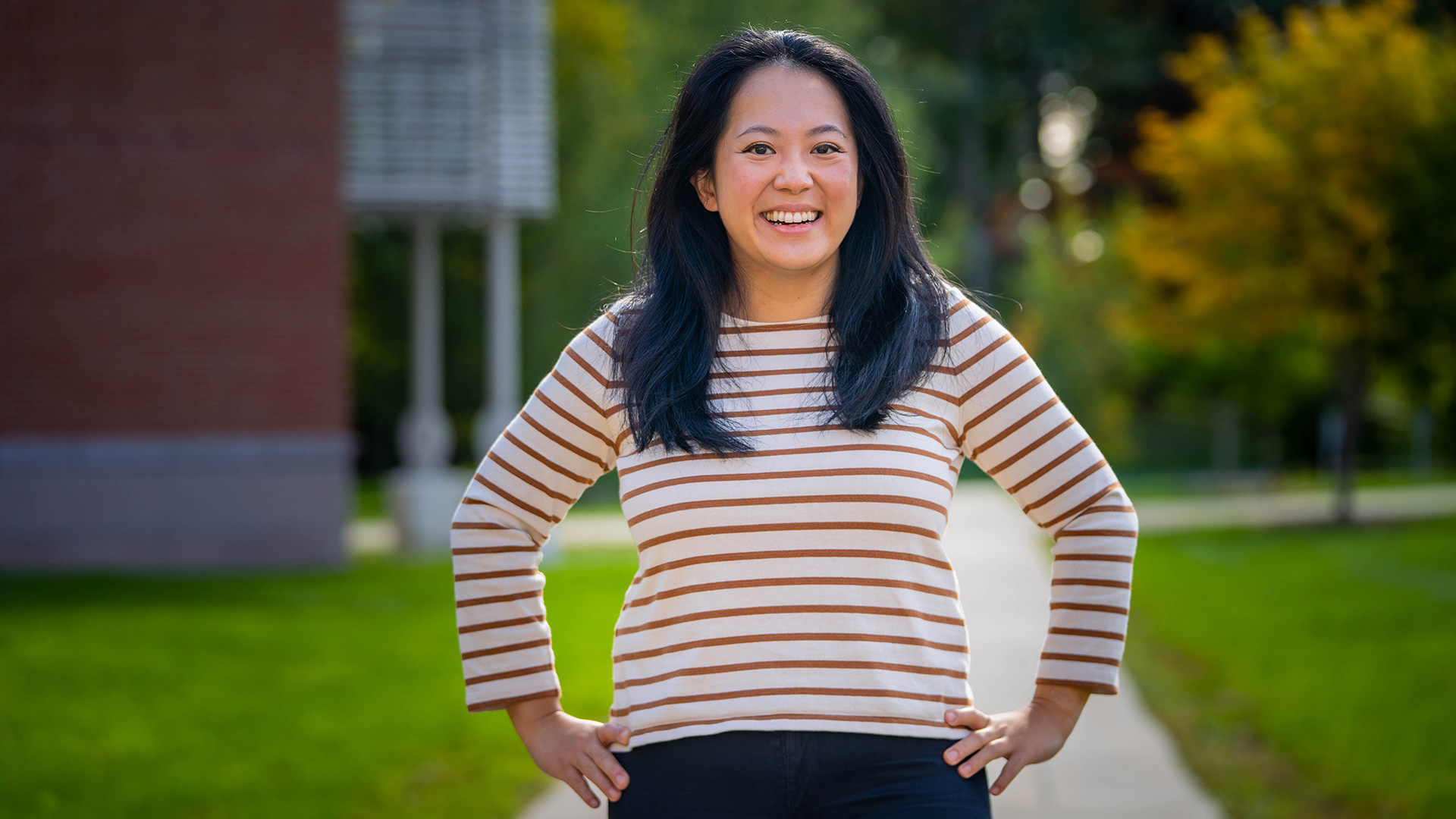Working as a quality improvement analyst in a community-based clinic in San Francisco’s Chinatown, after receiving a master’s degree in global health, Geisel medical student Ashley Yang ’24 came face-to-face with the healthcare needs of the city’s deeply rooted Asian-American population.
“There is an entire body of healthcare knowledge specific to Asians that I had not encountered in the past,” Yang says. “Though the Asian-American community is growing, we are still a small percentage of the U.S. population. In Houston, where I grew up, there is a large population of Asian-Americans, but that community is newer than the one in San Francisco and has fewer longstanding institutions serving Asians.”
Asian-Americans contend with many barriers to high-quality healthcare, including infrequent medical visits, language and cultural differences, and lack of health insurance. They are at elevated risk of undiagnosed diabetes, receive fewer cancer screenings, and bear a high burden of chronic hepatitis B, smoking, and tuberculosis if born abroad.
The Chinatown clinic offered a holistic set of services for publicly insured patients—doctors and nurse practitioners provided medical care alongside nutritionists (a federally grant funded Special Supplemental Nutrition Program for Women, Infants, and Children office was also onsite), health educators, and physicians licensed in forms of traditional Chinese medicine like acupuncture.

Yang carried what she learned about culturally informed healthcare with her to Dartmouth.
“The demographics of patients in the Upper Valley are different, and in my first year of preclinical learning I saw some gaps in our lecture content,” Yang recalls. “For example, there were discussions about epidemiology when we learned about viral hepatitis—age, high-risk personal characteristics, and global patterns—yet there was no discussion of how Asian-Americans account for 58 percent of Americans living with chronic hepatitis B.
“People born in the U.S. are well protected against hepatitis B because they are vaccinated with a three-shot series as babies,” she explains. “But it is endemic in many parts of Asia, especially among the older generation because the vaccine wasn’t available to them. Many people who develop an acute infection think that they’ve cleared the virus when they stop feeling ill, but for 10 percent of people the infection becomes chronic. If untreated, one in four will develop liver cancer—that’s why there are such high rates of liver cancer among Asians.” Yang notes that liver cancer rates for both Asian-Americans and Pacific Islanders are 13 times higher than that of Caucasians.
Yang says she doesn’t believe the curricular omissions are intentional, but perhaps due to the very small number of Asian patients seen in the Upper Valley, meaning that clinical faculty may not be as familiar with the nuances of providing care to them.
The rise of anti-Asian racism during COVID was salient for Yang. She points to conversations within the Asian community about generic labeling—considering Asian-Americans and Pacific Islanders as a monolithic group despite the diverse languages, cultures, and ancestries it encompasses —and the need to raise awareness about these issues with those outside the Asian community.
This inspired Yang, as a Community Health Scholar, to give a talk to her fellow medical students about these issues. She says race and health equity are an important part of preclinical learning and many Geisel-educated future physicians will practice in ethnically diverse urban communities.
She then modified that talk into a recent medical student Grand Rounds presentation: Considerations in the Health and Health Care of Asian-Americans. The scope of her presentation addressed a host of issues, including chronic illness, smoking, osteoporosis, preventive care, and traditional and alternative medicine, as well as barriers to care.
Yang pointed out that while cigarette smoking among Asians is generally less prevalent than in other racial groups, differences are apparent when disaggregated by ancestry, gender, and foreign-born status, with Asian immigrant men more likely to smoke than other Asian subgroups. Tuberculosis rates among Asians are also high—32 times higher than non-Hispanic Caucasians—and strongly linked to being foreign-born.
She cited potential barriers to preventive care, underutilized by Asians as a whole, including language and cultural barriers in the healthcare setting along with low health literacy in managing chronic illness, lack of familiarity with and distrust in Western medicine, and gaps in understanding between patient and provider. She noted that engaging adult children in healthcare decision-making for older family members can help overcome some of these challenges.
Thousands of years old, Traditional Chinese Medicine emphasizes the mind-body connection and values addressing root causes of illness rather than symptom management and plays a significant role in healthcare in how many Asians conceptualize health.
Yang argues that medical students need to be aware of how resources about providing culturally informed care tends to perpetuate generalizations about minority populations in a way that defeats the original intent—and cause harm.
“The most important thing is to see the patient in front of you as an individual,” she says. “Take a thorough history, while being aware of potential differences in culture and attitudes toward healthcare and look for context clues in the community you practice in about problems that may be prevalent among your potential patients.”